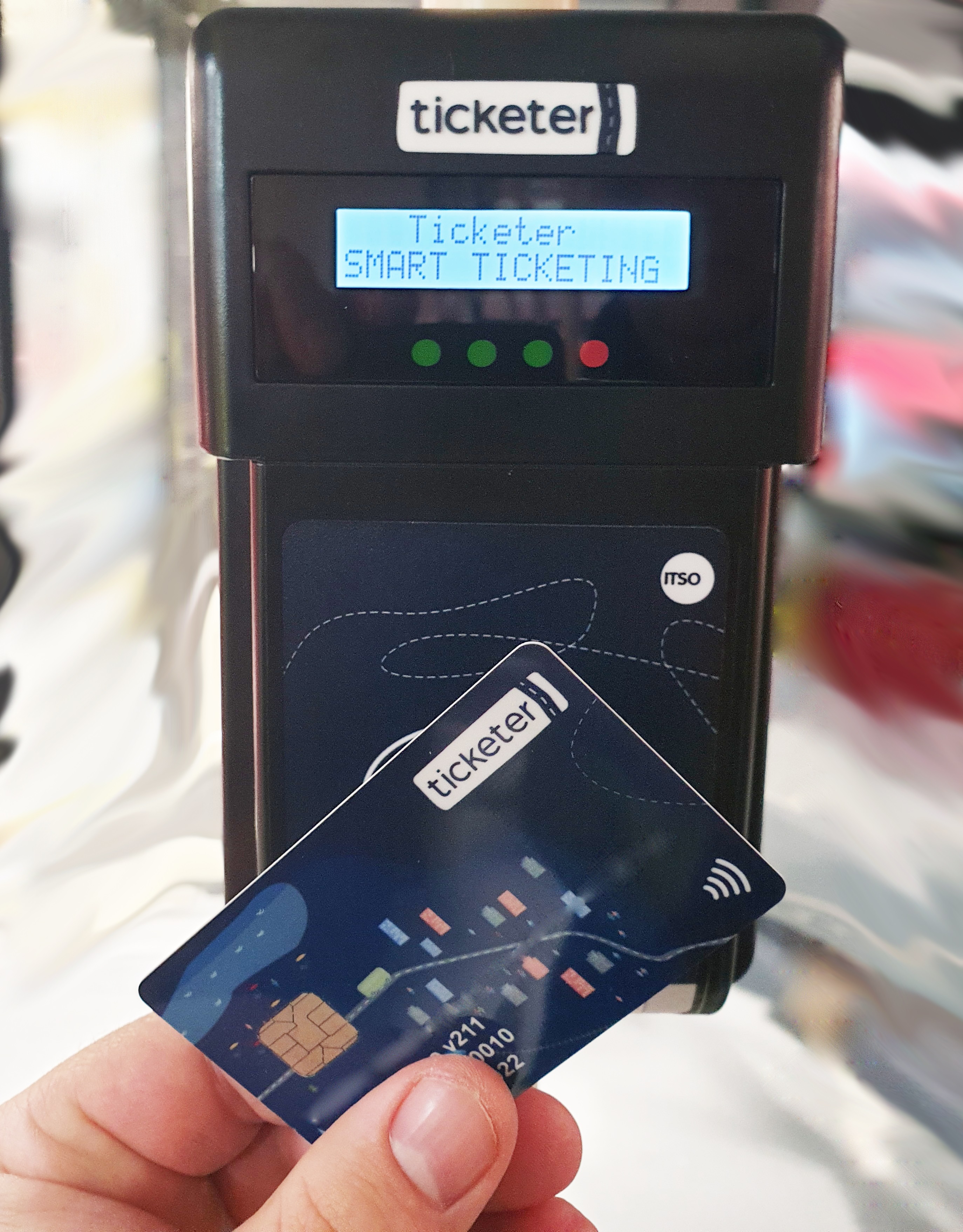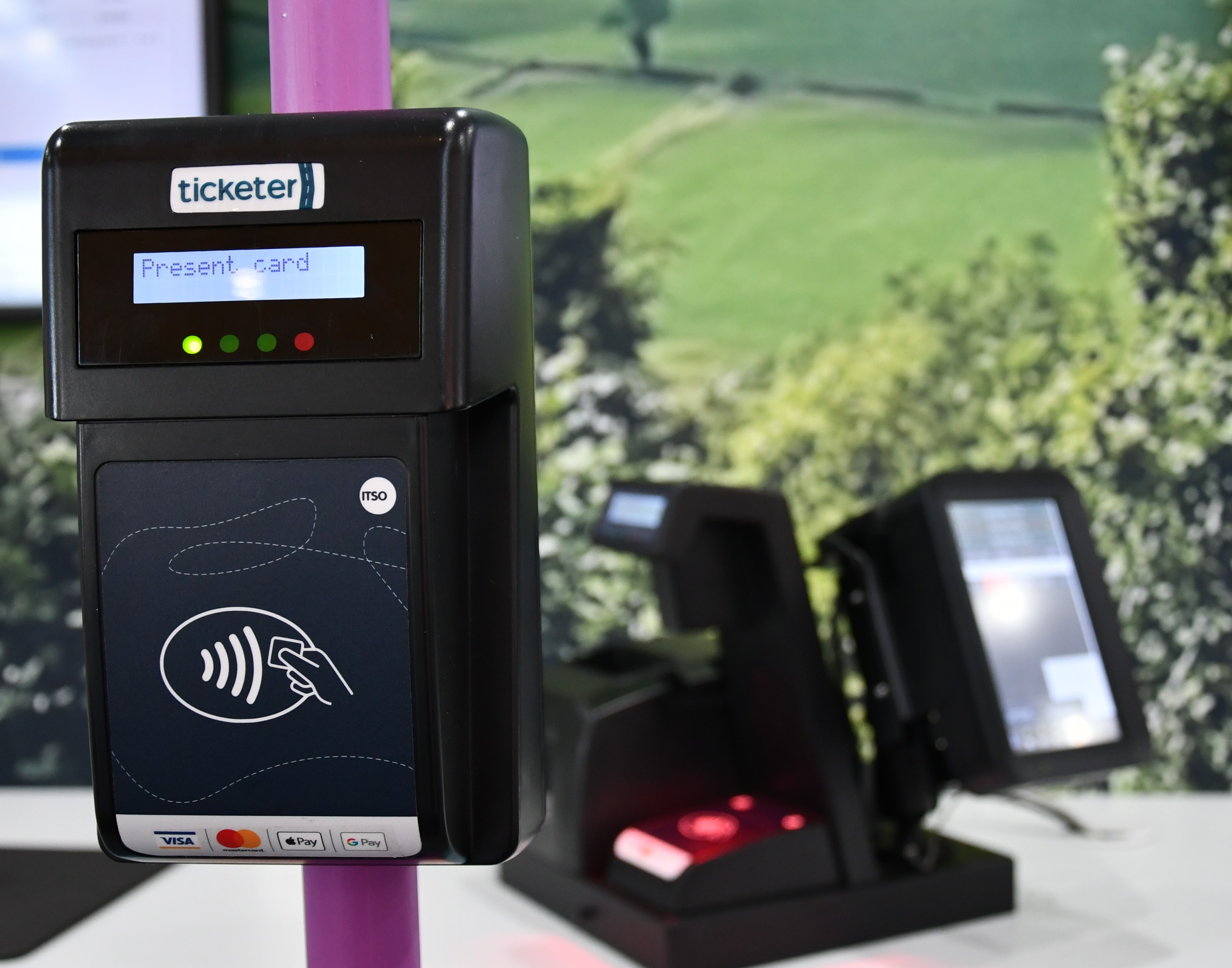 We recently met with Coach & Bus Week (CBW) to chat about our Tap Off Readers and the benefits of contactless fare capping.
We recently met with Coach & Bus Week (CBW) to chat about our Tap Off Readers and the benefits of contactless fare capping.
You can read the feature below, or alternatively visit Coach & Bus Week for the full article.
Ticketer’s Head of Implementation, James Hall and Account Manager, Kirsty Darby, chatted with CBW on how contactless has moved from a functional transaction to a payment revolution with Tap On / Tap Off Readers.
 One thing is certain – the way we pay for everything, from a coffee to a haircut, has changed. Transport is no different. With a revolution already underway in the past 15 years, the last few years have seen contactless rocket from zero to hero in a relatively short time. In fact, a 1,700% increase in contactless transactions is expected in the next two years, (source: Juniper Research via Statista). By developing the basic premise of contactless and extending it with the introduction of Tap Off Readers and fare capping, the pace will be quickened and with even more benefits realised.
One thing is certain – the way we pay for everything, from a coffee to a haircut, has changed. Transport is no different. With a revolution already underway in the past 15 years, the last few years have seen contactless rocket from zero to hero in a relatively short time. In fact, a 1,700% increase in contactless transactions is expected in the next two years, (source: Juniper Research via Statista). By developing the basic premise of contactless and extending it with the introduction of Tap Off Readers and fare capping, the pace will be quickened and with even more benefits realised.
With numerous advantages for both operators and passengers, it’s not just a passing phase for the industry but one that is giving customers the confidence to get back to bus following the pandemic. Ticketer’s Head of Implementation James Hall and Account Manager Kirsty shared their thoughts on trends and insights their customers are seeing.
Quicker boarding
 “Punctuality: it can be a massive issue for operators,” says Kirsty. “In particular, the slowness of boarding at busy stops is a real problem. Whilst we can’t remove the traffic from the roads (although we would love to have that superpower!), one of the things Tap Off Readers can help operators with is to speed up boarding and help with the efficiency of their services. With no need to ask for their ticket and pay the driver, passengers simply tap and board. Recently, Oxford Bus have seen a drop from 7 to 2 seconds boarding time with its Tap Off Readers.”
“Punctuality: it can be a massive issue for operators,” says Kirsty. “In particular, the slowness of boarding at busy stops is a real problem. Whilst we can’t remove the traffic from the roads (although we would love to have that superpower!), one of the things Tap Off Readers can help operators with is to speed up boarding and help with the efficiency of their services. With no need to ask for their ticket and pay the driver, passengers simply tap and board. Recently, Oxford Bus have seen a drop from 7 to 2 seconds boarding time with its Tap Off Readers.”
“It’s an operational reality that if you can increase the speed of passenger boarding, you can reduce the dwell time at a stop. Ultimately, those seconds per stop all add up in your end to end running time,” says James. “To stay within an operator’s Peak Vehicle Requirement (PVR), those seconds count. It gives you flexibility within the schedule to better adjust for congestion and maintain the timetables and frequencies we have today.”
Best value for passengers
To get the maximum benefit from Tap Off Readers, making the link with capping means you have a clear customer message.
 “To drive ridership, you need to make a step change,” says James. “The kind of change that says to your customer base, ‘this isn’t just a new payment method, but we’re working to give you best value to support you.’ Capping prices is an important part of that, by charging the best value for travel, whether that’s today, this week, this month or on a particular group of services.”
“To drive ridership, you need to make a step change,” says James. “The kind of change that says to your customer base, ‘this isn’t just a new payment method, but we’re working to give you best value to support you.’ Capping prices is an important part of that, by charging the best value for travel, whether that’s today, this week, this month or on a particular group of services.”
A wealth of data
There’s a wealth of data which is captured with Tap Off Readers and with enhanced reporting packages, operators can get greater insight into this.
“If you’re able to see where customers are getting on and off, you can track those customer journeys across networks,” comments James. “This gives you a greater level of insight than ever before. It’s only when you actually start analysing data from a Tap On / Tap Off perspective, you can see the linkages customers are making, to feedback through into the wider network planning piece.
It’s hard for operators to devise their networks. Quite often it’s down to the joys of manual surveys to capture that data. Now, we actually have that data within the Tap On / Tap Off environment to make more informed decisions and impact network planning. If we can have a more efficient operation for passengers and then potentially that’s more efficient operationally too.”
multi-operator schemes
“Many of our customers are seeing other operators using Tap Off Readers – they’re aware of it, they’ve seen it, they’ve tested it and sampled it on other operators’ services.” says Kirsty. “Often, they are looking to offer their customers consistency to use the same technology as other operators in the area. That’s where multi-operator schemes have been growing, so customers can travel with their normal operator while having the ability to travel on other operator’s services and still get the best price if they tap on and tap off.”
installation is not difficult
 “Some people worry that it’s going to be a difficult process to install Tap Off Readers, but our installers know what they’re doing.” says James. “It’s a single wire installation connecting the ticket machine to the Tap Off Reader to provide it with power and communications. We’ll run that cable internally within the vehicle hidden behind panels and wherever it needs to go, and ultimately dropping it up or down poles depending on the vehicle type. You end up with a very clean installation with the reader installed on a on a hand pole and then a small hole in the dash with the wire popping out and connecting up onto the ticket machine. It’s as clean and neat as possible.”
“Some people worry that it’s going to be a difficult process to install Tap Off Readers, but our installers know what they’re doing.” says James. “It’s a single wire installation connecting the ticket machine to the Tap Off Reader to provide it with power and communications. We’ll run that cable internally within the vehicle hidden behind panels and wherever it needs to go, and ultimately dropping it up or down poles depending on the vehicle type. You end up with a very clean installation with the reader installed on a on a hand pole and then a small hole in the dash with the wire popping out and connecting up onto the ticket machine. It’s as clean and neat as possible.”
trusted partner
“As a trusted partner, we’re there to guide and assist” says James. “Hopefully, we can share some best practice from our experience with our customers over the years as well. Helping customers to do whatever is right for them – with contactless, Tap Off Readers and Tap On / Tap Off – Ticketer is helping customers give their passengers an easier, frictionless way to travel.”

